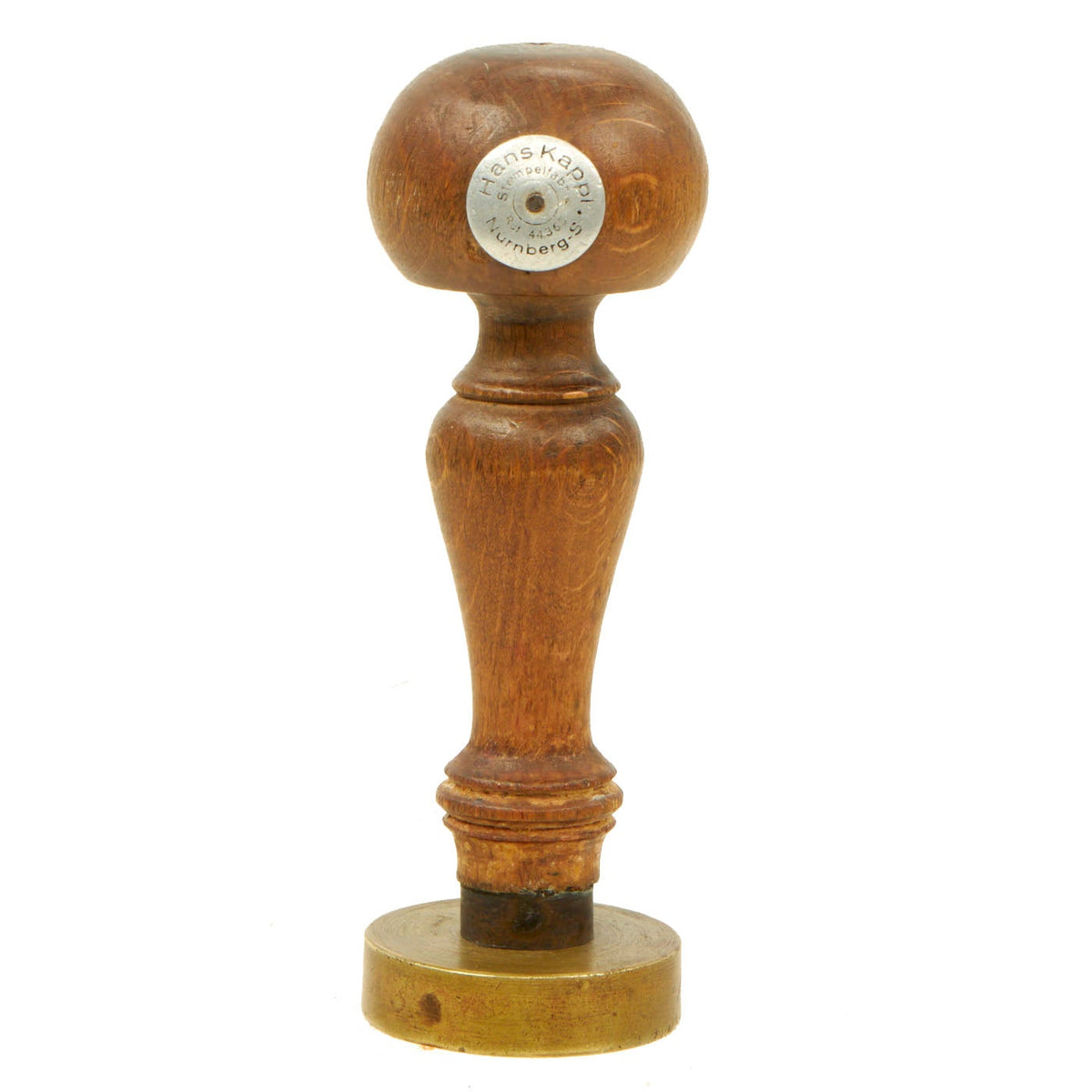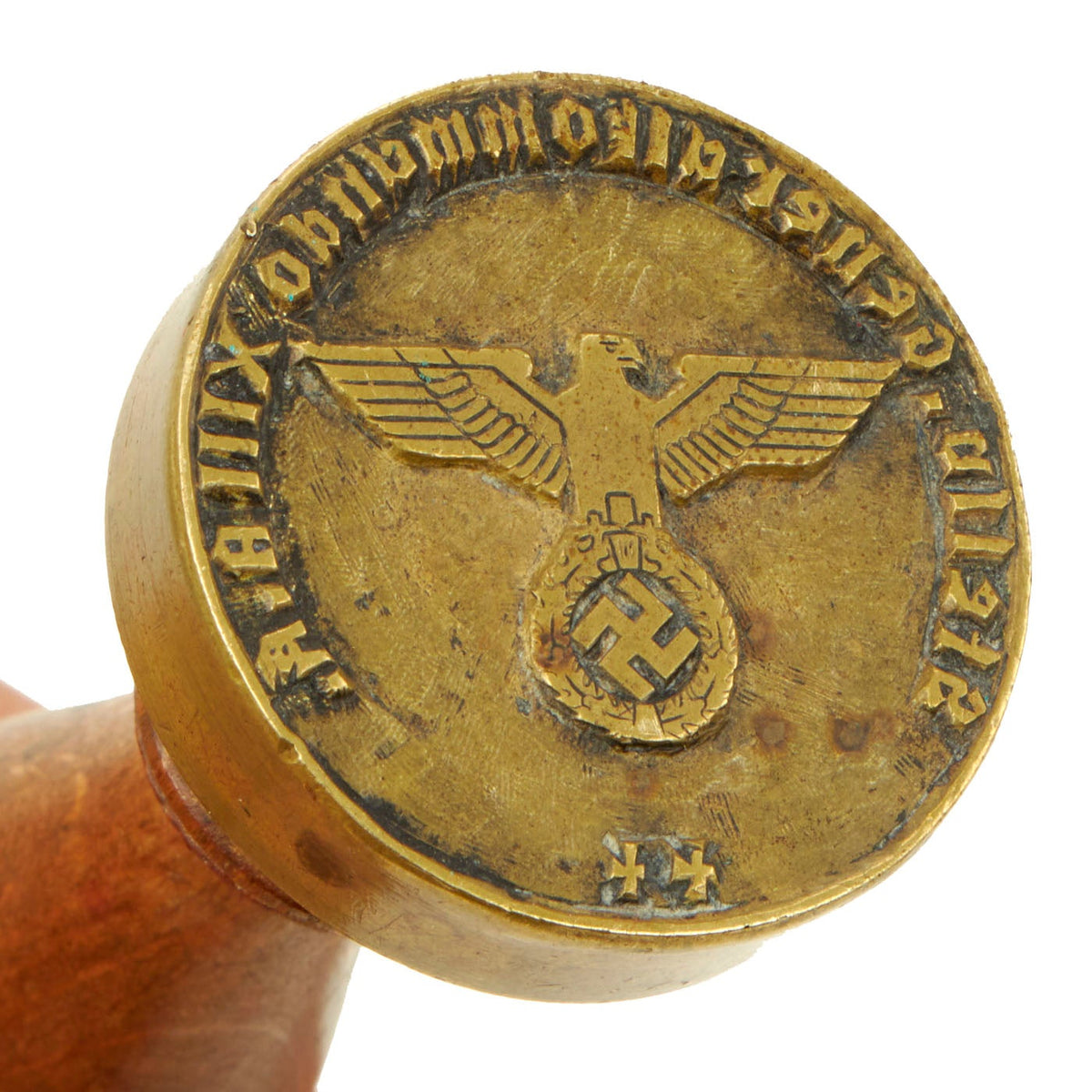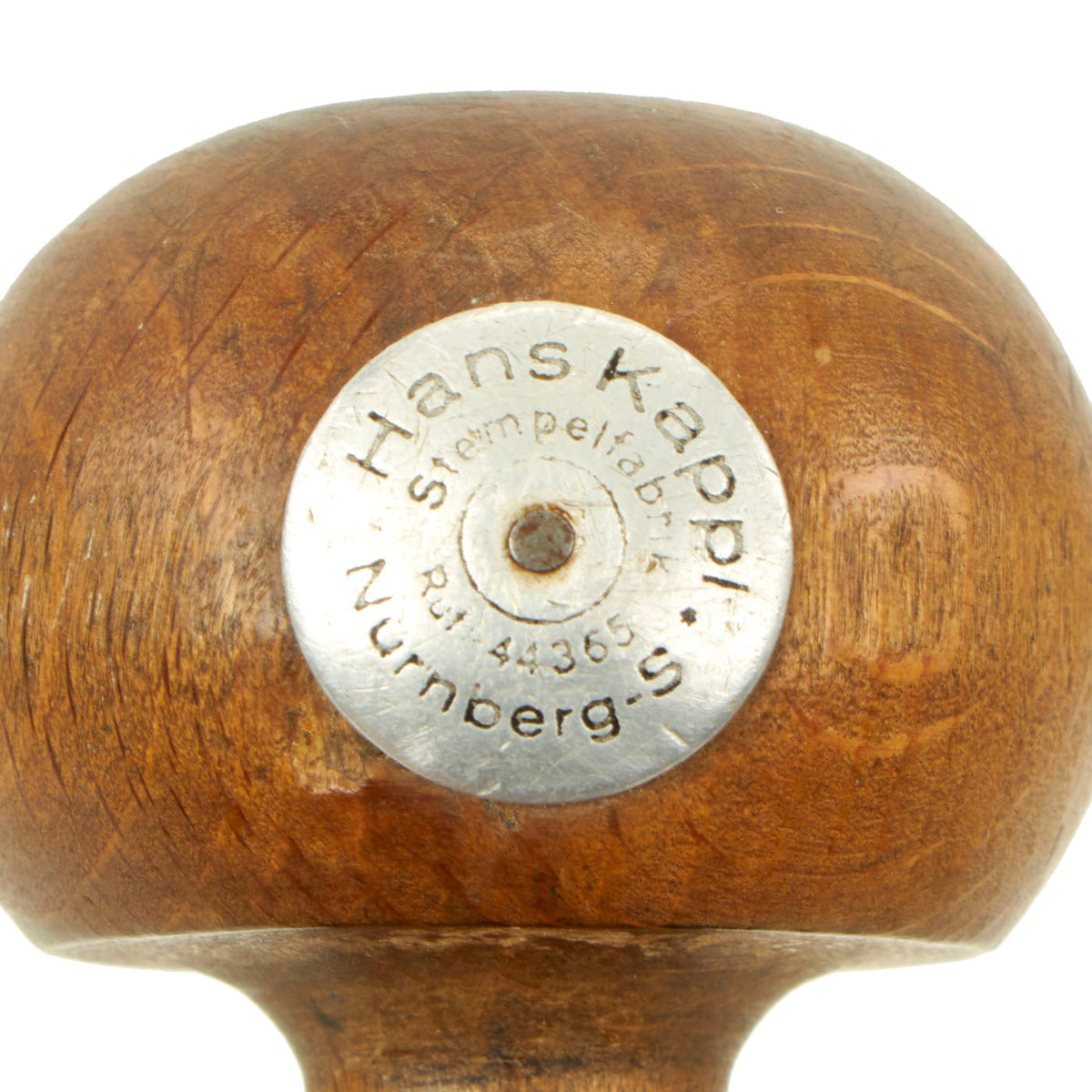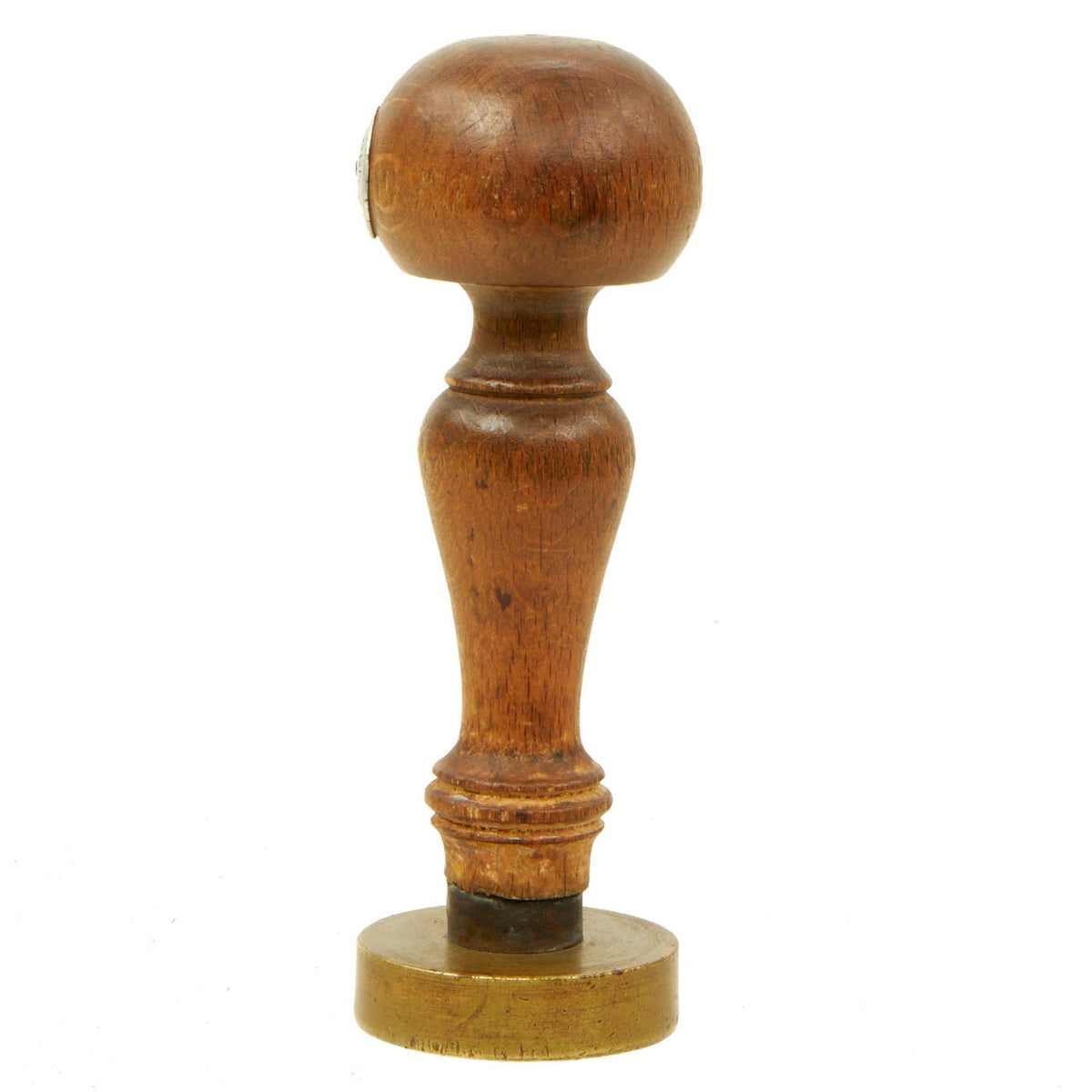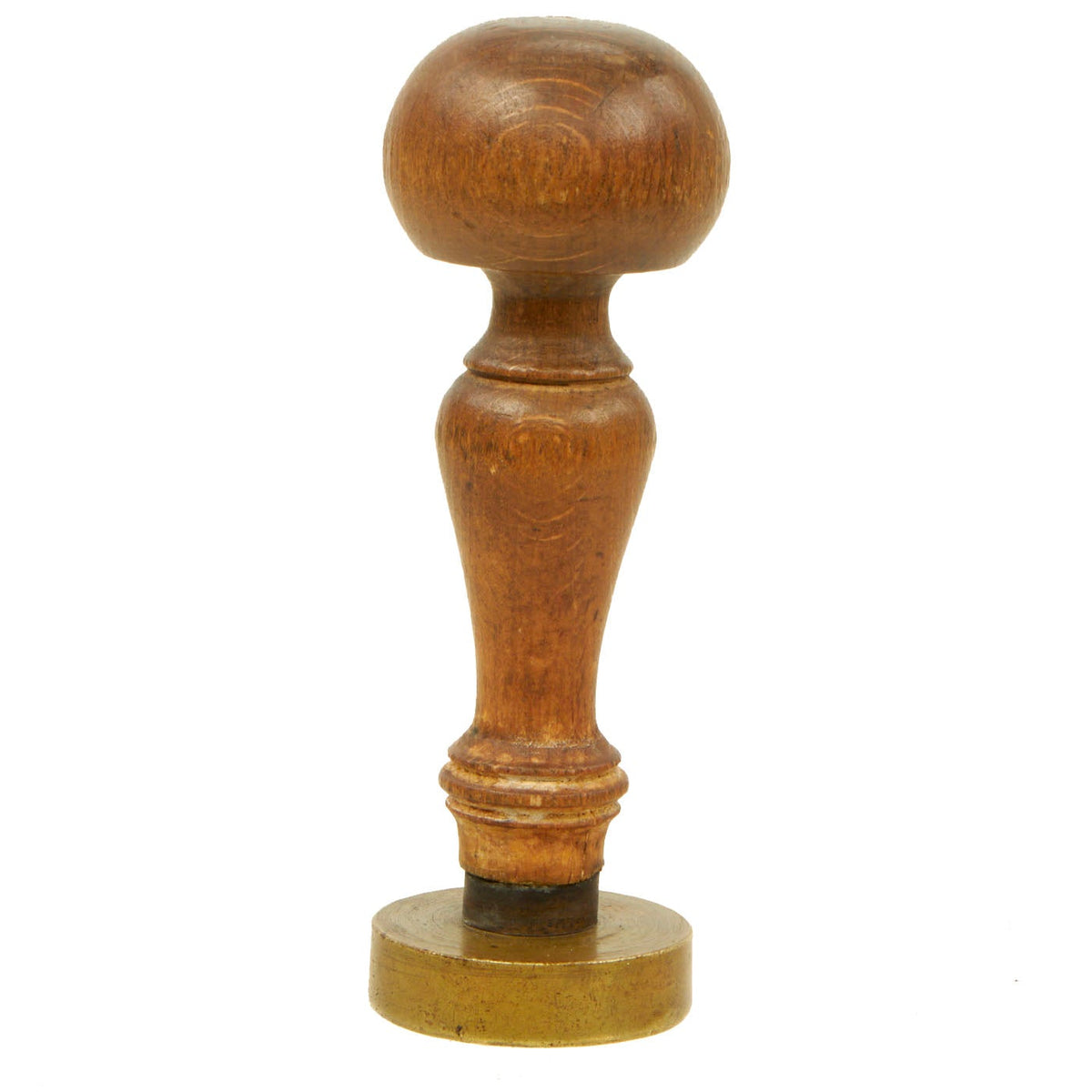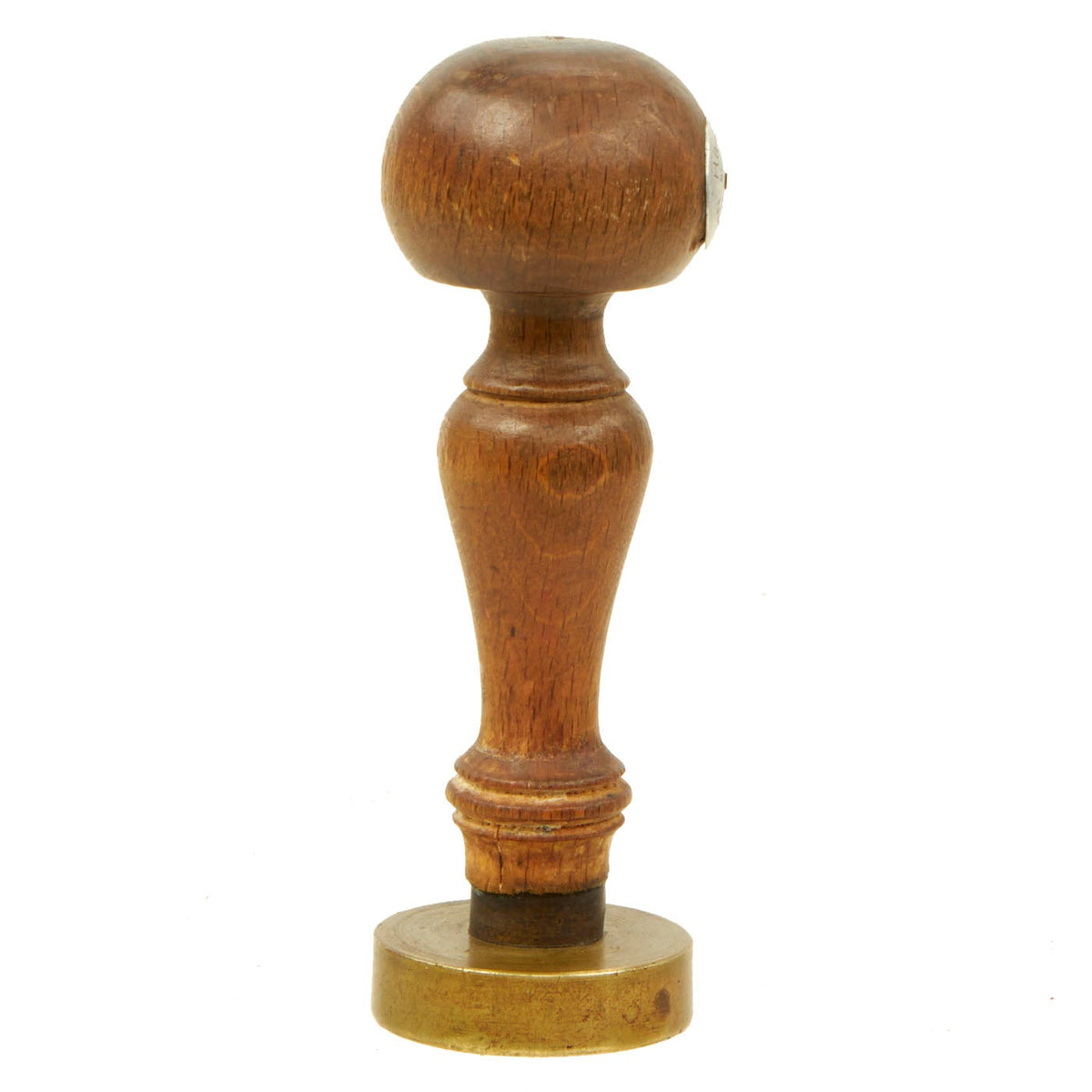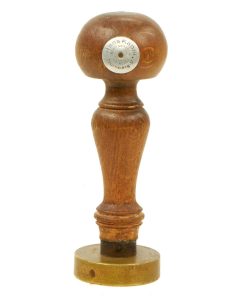Original German WWII Heer XIII Army Corps Deputy General Command Brass Seal Stamp Original Items
$ 795,00 $ 238,50
Original Item: Only One Available. Well this is definitely something that we haven’t seen before! A real German WWII Brass Seal Stamp from one of the major groups of the German Heer Army, the XIII Armeekorps! This stamp measures 4 1/4″ in height, and has a 1 3/8″ wide brass stamp on the bottom. This has the German WWII Eagle in the center, and around the outside it is marked with:
Stellv. Generalkommando XIII A. K.
Without abbreviation, this would read Stellvertretendes Generalkommando XIII Armeekorps. “Stellvertretendes” means “Representative” or “Deputy”, so this stamp is for a representative of the German XIII Army Corps General Command. We assume that this would be used to stamp things such as award documents and other items in need of an official signature and stamp. As the commanders were often too busy for such tasks, these were left to deputies.
The handle of the stamp has a very nice maker mark on an aluminum disk, which we believe reads:
Hans Kappl
Stempelfabrik
Ruf 44365
Nürnberg-S
This is a known maker of rubber and other stamps during the WWII period and afterwards, and they were still located in Nuremberg when they closed recently.
A fantastic piece of German militaria, something that we’re unlikely to see anytime again in the near future. Ready to research and display!
XIII Army Corps (German: XIII. Armeekorps) was a corps of the German Army during World War II. Made up of several divisions, which varied from time to time, it was formed in Nuremberg on 1 October 1937.
Soon after the general mobilisation of August, 1939 the corps was engaged in the Polish campaign. Made up of the 10th, 17th, and 221st Infantry, it was part of the 8th Army. After the decisive German victory at the Battle of the Bzura, the Corps was transferred to the 16th Army in the Trier area of western Germany.
During the Invasion of France the following year the corps advanced to the River Meuse through Luxembourg in May, 1940. Reassigned to the 16th Army in the Champagne district they had reached Chalons-sur-Saône by the time of the Armistice. In July XIII Corps was moved to northern France to take a leading role in the planned, and then abandoned, Operation Sealion, the invasion of England. Instead they were moved to the Netherlands.
In May 1941 they were transferred to East Prussia to take part in Operation Barbarossa, the mass invasion of Soviet Russia. Comprising the 17th and the 78th Infantry Divisions, they formed a unit of the 4th Army in German Army Group Center. By July they had crossed the River Dnieper to Chernigov. In December, faced by Soviet counterattacks, they had to retreat back across the Ugra River. In April 1942 the Corps was transferred to the 4th Panzer Army.
In January 1943 a Soviet counter-offensive pushed XIII Corps back to the Olym river. After the Soviet victory at the Battle of Kursk in July 1943 further retreat back to the River Dneiper was necessary. More Soviet attacks in December forced more retreat. In January 1944 they were pushed back to Galicia on the border of Poland and Ukraine. In March 1944 the Corps was completely surrounded and crushed by the Soviet 4th Tank Army near Lviv in western Ukraine and subsequently dismantled by 5 August. Remnants of the Corps were absorbed into the Grossdeutschland Panzer Corps.
In January 1945 a newly formed XIII Corps was created from the Vosges Commando and stationed on the Western Front as part of 2nd Panzer Division. An Allied attack in April pushed the Corps back to Günzburg and, no longer operational, it retreated to the northern Alps.
Fast Shipping with Professional Packaging
Thanks to our longstanding association with UPS FedEx DHL, and other major international carriers, we are able to provide a range of shipping options. Our warehouse staff is expertly trained and will wrap your products according to our exact and precise specifications. Prior to shipping, your goods will be thoroughly examined and securely secured. We ship to thousands clients each day across multiple countries. This shows how we're dedicated to be the largest retailer on the internet. Warehouses and distribution centres can be located throughout Europe as well as the USA.
Note: Orders with more than one item will be assigned a processing date depending on the item.
Before shipping before shipping, we'll conduct a thorough inspection of the items you have ordered. Today, the majority of orders will be delivered within 48 hours. The delivery time will be between 3-7 days.
Returns
The stock is dynamic and we cannot completely manage it because multiple stakeholders are involved, including our factory and warehouse. So the actual stock may alter at any time. It's possible that you may not receive your order once the order has been made.
Our policy is valid for a period of 30 days. If you don't receive the product within 30 days, we are not able to issue a refund or an exchange.
You can only return an item if it is unused and in the same state as the day you received it. You must have the item in its original packaging.
Related products
Uncategorized
Uncategorized
Uncategorized
Uncategorized
Uncategorized
Uncategorized
Uncategorized
Uncategorized
Australian WWII Owen MK1 Machine Carbine SMG Custom Fabricated Replica with Sling Original Items
Uncategorized
Uncategorized
Uncategorized
Armored Burgonet Helmet & Polearm from Scottish Castle Leith Hall Circa 1700 Original Items
Uncategorized
Armoured Fighting Vehicles of the World: AFVs of World War One (Hardcover Book) New Made Items
Uncategorized
Uncategorized
Uncategorized
Uncategorized
Uncategorized
